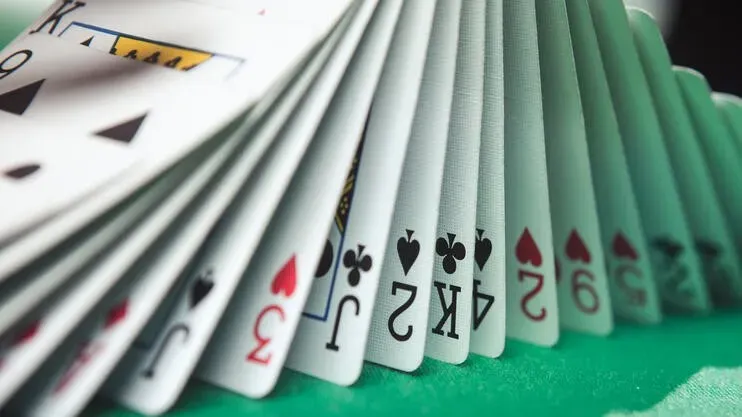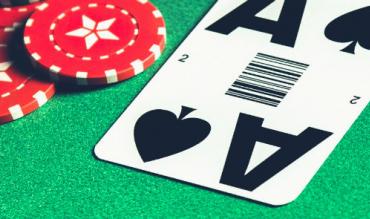In casino poker rooms where participants play against each other, Texas Hold'em has long been the No. 1 game of choice.
In table pits on main casino floors as well as in online casino table games, casinos like to give players some of the Hold'em feel while in games where bettors play against the dealer and/or against a pay table instead of against each other.
One such game that is spreading among online casinos is Casino Hold'em. Its availability has been limited in live casinos in the United States, though it is widespread overseas. Americans get their taste of the game primarily online.
Casino Hold'em odds show a 2.16 percent house edge on the most common pay table. That's right in line with the better poker-based games in table pits.
The basics of how to play Casino Hold'em are easy. It's a seven-card stud-based game, with each player and the dealer receiving two cards face down, followed by three community cards common to all hands, followed by two more community cards.
From your two cards plus the five community cards, you make your best five-card poker hand to try to beat the dealer.
As in many poker-based table games, an ante, a play bet and a dealer qualifying hand all figure into Casino Hold'em odds. There also is an optional side bet on a progressive jackpot.
Let's take a look at how to play Casino Hold'em and Casino Hold'em odds.
WAGERS AND THE DEAL
To start play, you must make an ante and have the option of making a side bet on a progressive jackpot.
Once wagers are made, you receive two cards. So does the dealer. Three community cards, called the flop, are dealt face up at the center of the table.
After you've looked at your cards, you must decide whether to fold and lose your ante, or whether to make a Call bet of twice your ante. If your ante is $5, you must bet $10 to Call and stay in the hand.
Once players have either folded or called, two more community cards are dealt face up at the center of the table.
The dealer then turns his own cards face up and settles bets.
WINNING, LOSING AND PAYOFFS
Once all cards are on the table, the first thing the dealer must check is whether he or she has a qualifying hand of a pair of 4s or better.
If the dealer hand does not qualify, then you are paid only on your ante. Your call bet is a push and is returned to you.
That makes a big difference in Casino Hold'em odds. It means you receive no call bet payoff on weak dealer hands where you are likely to have the higher-ranking hand. That's where the house gets its edge. Without the qualifying hand provision, there would be no house edge.
However, you can win big even if you win only the ante. There are several pay tables the casino can choose, but the most common is below:
| Player Hand | Payoff |
|---|---|
| Royal flush | 100-1 |
| Straight flush | 20-1 |
| Four of a kind | 10-1 |
| Full house | 3-1 |
| Flush | 2-1 |
| All other hands | 1-1 |
Note that this pay table applies if the dealer doesn't qualify even if you don't beat the dealer.
However, if the dealer qualifies, you must beat the dealer to win both the ante and call bets. In that case, the ante is paid according to the pay table and the call is paid at even money.
If the dealer hand qualifies and outranks yours, you lose both the ante and call. If the dealer qualifies and the hands tie, then you push and the bets are returned to you.

THE HOUSE EDGE AND OTHER PAY TABLES
At wizardofodds.com, Michael Shackelford notes at least three other available pay tables. Some have lower house edges than the 2.16 percent for the table listed above and some have higher.
All four pay 3-1 on full houses, 2-1 on flushes and 1-1 on straights or lower. The difference is in the three highest-ranking hands.
One table treats royals and other straight flushes equally paying 20-1 along with 10-1 on four of a kind. That leads to a house edge of 2.4 percent, a little higher than the common game.
Another is a little more generous, paying 25-1 on royal and straight flushes and 12-1 on quads. That drops the edge to 1.96 percent.
But the version with the best Casino Hold'em odds pays 100-1 on royals, just like the common version, but hikes other straight flushes to 49-1 and four of a kind to 17-1. The house edge is a mere 0.35 percent, which would make it one of the best games in most casinos.
CASINO HOLD'EM STRATEGY
When you explore how to play Casino Hold'em, it's important to have an idea of when to fold and when make the call bet. Shackelford at wizardofodds.com reports there is no easy way to quantify optimal strategy, but you should make the call bet and stay in the hand about 82 percent of the time.
When should you fold? The best rule of thumb is not to risk the extra bet if your hole cards are unpaired, low in comparison with those in the first three community cards, and you have no chance of pulling a straight or flush.
Imagine you have a 2 of spades and a 7 of diamonds, a couple of the community cards are higher than your 7, and they are not sequenced or suited to give you a shot at a straight or flush in the last two community cards. You'll want to fold.
But the potential rewards on the ante even if the dealer doesn't qualify are high enough that we make the second bet more often than in many poker-based table games.
THE PROGRESSIVE BET
Part of how to play Casino Hold'em is the option to bet on a progressive jackpot at the same time you ante. It's a $1 bet, ,and payoffs can run to several thousand dollars if you get lucky.
If you make that bet, you're paid with a full house or better, or about 2.8 percent of all hands. The infrequency of payoffs make this a hand for big-pay hunters. Winners are paid at the following pay table:
| Royal Flush | Jackpot |
|---|---|
| Straight Flush | 10 percent of jackpot |
| Four of a kind | $100 |
| Full house | $10 |
A percentage of each progressive wager is added to the jackpot until someone wins it all. Then the jackpot is reset to a seed amount and starts building again.
Wizardofodds.com calculates the fixed payoffs on four of a kinds and full houses return 42.77 percent of wagers to players. The rest of the return and the house edge depend on the size of the jackpot. Each $1,000 in the pot increases the return by 6.02 percent, so if the house seeds the jackpot at $1,000, the return at rest would be 48.79 percent for a whopping house edge of 51.21 percent.
That would make $9,503.22 the break-even point at which average return is 100 percent and the house edge is zero. However, you'd still be dealt a paying hand only 2.8 percent of the time, so even at no house edge this is a high-risk, high-reward bet.
THE AA+ BONUS SIDE BET
Some casinos offer a side bet based on your two cards and the three-card flop. All pay on a pair of Aces or better, but several pay tables are available.
One pay table spotted at online casinos has a house edge of 2.97 percent:
| Hand | Payoff |
|---|---|
|
Royal flush |
100-1 |
| Straight flush | 50-1 |
| Four of a kind | 40-1 |
| Full house | 30-1 |
|
Flush |
20-1 |
|
Straight |
10-1 |
|
Three of a kind |
8-1 |
|
Two pairs |
7-1 |
| Pair of Aces | 7-1 |
Other pay tables have higher house edges exceeding 6 percent. They're best skipped. If you find this pay table, the house edge is lower than most side bets, though it's still higher than the edge on the main game.
CONCLUSION
There's a lot to like about Casino Hold'em. It's easy, the ante pay table is attractive and you don't fold as often as in many poker-based games.
The house edge isn't as low as blackjack players who know their strategy or for craps players who stick to the best bets, but recreational players will find a relaxed game that give them a fighting chance.


